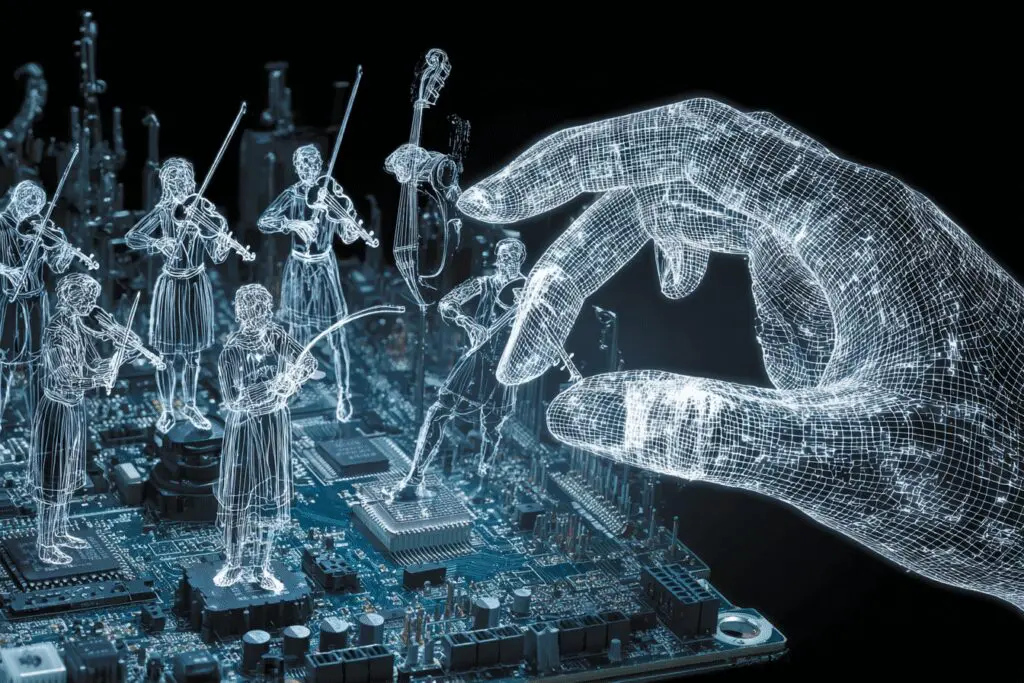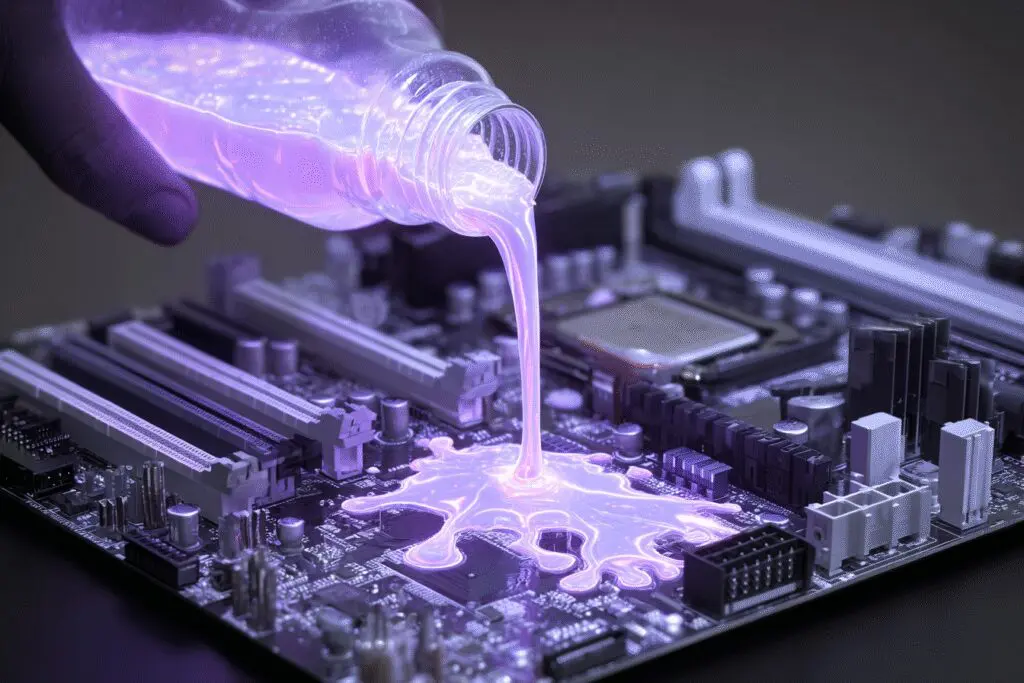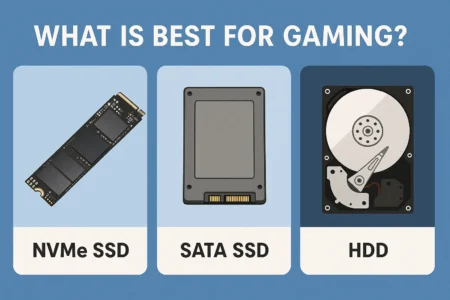Let’s be honest, figuring out how to update motherboard drivers sounds about as exciting as watching paint dry. But trust me, it’s one of those tech skills that can genuinely save you from pulling your hair out. I learned this the hard way. A few years back, I built my first gaming PC. I spent weeks picking out the parts, meticulously putting it all together, and when I finally hit the power button and it lit up, I felt like a genius. That feeling lasted about ten minutes.
My internet connection, which was supposed to be blazing fast, was slower than dial-up, and the audio in my headphones had this awful, persistent crackle. I was convinced I had a faulty part. After what felt like an eternity of troubleshooting, a buddy of mine looked over my shoulder and asked the simple question: “You did update all your motherboard drivers, right?”
The silence was deafening. That was it. That was the magic bullet. It turns out, all that fancy hardware is just a collection of expensive parts until you give it the right software to communicate. So, let’s get into the weeds of why this is so important and how you can do it without the headache I went through.
More in Motherboards & Storage Category
Is Samsung EVO Good for Gaming
What Is the Best Motherboard for Gaming
How to Add More Storage to PC for Gaming
What in the World Are Motherboard Drivers Anyway?
Okay, so imagine your motherboard is the general manager of a busy office. It’s the big boss, the central hub that makes sure every department—the CPU, the graphics card, your memory, all the USB ports—is connected and on the same page. But the general manager doesn’t speak the unique language of every single employee. It needs translators. That’s precisely what drivers are.
They’re little snippets of code that act as interpreters between your hardware components and your operating system (like Windows). The audio chip on your motherboard has its own driver, the thing that controls your internet port (the LAN chip) has its, and most importantly, the core chipset that manages the whole show has its own set of drivers. Without them, Windows would look at your hardware and have no idea what to do with it. It’s a recipe for chaos, poor performance, and the kind of weird glitches that make you want to throw your computer out the window.
So, why is it a big deal to keep them updated? Well, the people who make your motherboard are always finding ways to make these little translators better. An update isn’t just for show; it can deliver some serious benefits:
- Better Performance: Sometimes, an update can unlock performance you didn’t even know you were missing. A new chipset driver might seriously speed up how fast your memory talks to your processor.
- Fewer Crashes: If your computer has been randomly freezing or crashing, there’s a good chance an outdated driver is the culprit. Updates are packed with bug fixes for these kinds of stability issues.
- Tighter Security: It’s not common, but security holes can be found in drivers. Updates patch these up, keeping your system safer from potential threats.
- New Goodies: Once in a while, an update might even enable a new feature on your hardware.
Basically, keeping your drivers fresh is fundamental PC maintenance. It’s like getting an oil change for your car. It keeps everything running the way it was meant to—smoothly, quickly, and reliably.
How Can I Tell If My Drivers Are Old and Busted?
This is a perfectly reasonable question. Your computer doesn’t exactly pop up a giant notification saying, “Hey, your audio driver is from six months ago!” But there are definitely clues you can look for. If you just plugged in a new webcam and it’s acting weird, or if your whole system has been unstable ever since the last big Windows update, drivers should be your first suspect. An OS update can sometimes throw a wrench in the works, creating a conflict with older software.
The most obvious sign, though, is in the Windows Device Manager. You can get to it by right-clicking the Start button. This tool is a list of every single piece of hardware in your rig. If you see a little yellow triangle with an exclamation mark next to anything, that’s Windows screaming at you that there’s a problem, and it’s very often a driver issue.
But you don’t need to wait for a yellow triangle to appear. I make it a habit to check for new drivers every couple of months. It’s just good practice, especially if you want your PC to be in top shape for gaming or work.
Where’s the Safest Place to Get New Drivers?
I cannot stress this enough: the only place you should be getting your motherboard drivers is from the official support website of the company that made your motherboard (like ASUS, Gigabyte, MSI, etc.). Period.
Here’s why that’s so important:
- They’re custom-fit: The drivers on that site were made and tested for your exact model. They’re not generic, one-size-fits-all files.
- They’re clean: You know for a fact they are the real deal, with no viruses or malware bundled in.
- They’re stable: The manufacturer has likely tweaked the drivers they get from the component makers (like Intel or Realtek) to make sure they work perfectly with the specific layout and features of your board.
First, you need to know your motherboard’s model name. If you don’t have the box anymore, no sweat. Just type “System Information” into the Windows search bar and open it up. In that window, you’ll see lines for “BaseBoard Manufacturer” and “BaseBoard Product.” That’s the info you need.
With that knowledge in hand, just Google the manufacturer’s name plus “support,” head to their site, and find the driver download page for your model.
Which Drivers Are the Most Important to Update?
When you get to the download page, you might feel a bit overwhelmed by the list of files. While updating everything is ideal, some are more critical than others. If you’re short on time, focus on these.
- Chipset Drivers: This is the big one. The absolute number one priority. The chipset is the traffic cop for your whole motherboard, and updating its drivers can bring the biggest gains in stability and performance.
- Audio Drivers: Got funky sound issues? An updated audio driver from Realtek (or whoever made your audio chip) is your best bet.
- LAN/Ethernet Drivers: If your wired internet is dropping or feels slow, a new LAN driver can work wonders.
- Wi-Fi and Bluetooth Drivers: If your board has wireless capabilities, you’ll want to keep these updated to ensure a strong and stable connection.
- SATA/RAID Drivers: These are for your hard drives and SSDs. Keeping them updated helps with data transfer speeds and the health of your storage.
Should I Just Use One of Those Automatic Driver Updater Programs?
You’ve seen the ads. Software that claims it can scan your PC and update every single driver with one click. It sounds great, but I’m begging you, stay away from them. I fell for it once a long time ago. The program installed a graphics driver that wasn’t quite right for my card, and my monitor just went black. It took me hours of booting into Safe Mode to fix the mess it made.
The issue is that these programs often grab generic drivers that haven’t been customized by your motherboard’s manufacturer. This can lead to all sorts of weird conflicts and instability. It’s a shortcut that often leads to a much longer, more frustrating journey. Taking the extra ten minutes to go to the official website is always, always the better choice.
Your Step-by-Step Guide on How to Update Motherboard Drivers
Ready to do this? Let’s walk through it.
Step 1: Figure Out Your Motherboard Model
Like we covered, open up “System Information” in Windows and jot down the “BaseBoard Manufacturer” and “BaseBoard Product.”
Step 2: Head to the Manufacturer’s Website
Search for “[Your Manufacturer] support,” find their official site, and navigate to the driver download area.
Step 3: Pinpoint Your Product’s Page
Type your motherboard’s model name into the search bar to find its dedicated support page.
Step 4: Grab the Latest Drivers
You’ll see a spot to select your operating system (like “Windows 11 64-bit”). Choose the right one. Now, go down the list and download the latest versions of the key drivers: Chipset, Audio, LAN, and any others you need. They’ll probably come as .zip files. Make a new folder on your desktop and save them all there so they’re easy to find.
Step 5: Install Them in the Right Order
This part is important. You can’t just install them randomly.
- Unzip Everything: Right-click each .zip file and extract it into its own folder.
- Install the Chipset Driver FIRST: I’m repeating this because it’s that important. Open the chipset folder, find the “setup.exe” (or similar) file, and run it. Follow the instructions. It will almost certainly ask you to restart your computer. Do it.
- Install the Rest: After the restart, you can install the other drivers. The order doesn’t matter as much here. Just go through each one, run the setup file, and follow the prompts. You might need to restart after each one, which is a bit of a pain, but it’s the proper way to do it.
- Check Your Work: After the final restart, you can pop open the Device Manager again. The yellow warning triangles should all be gone.
What if an Update Makes Things Worse?
Look, it’s not common, but it can happen. Sometimes a new driver has a bug. If your PC starts acting up right after you updated a driver, don’t freak out. Windows has your back. You can “roll back” to the version you were using before.
Just do this:
- Open the Device Manager.
- Find the hardware that’s being difficult.
- Right-click it and choose “Properties.”
- Click on the “Driver” tab.
- You should see a button that says “Roll Back Driver.” Click it.
This is your escape hatch. It’s a simple way to undo the update and get things back to normal. For really solid, no-nonsense tech help, university IT sites are a great resource. For example, the folks at the University of Michigan’s IT services have some great public-facing guides.
What About the BIOS?
On that same download page, you’ll see a section for “BIOS” or “UEFI.” The BIOS is the super low-level software that boots your computer. Updating it is also important, but it’s a much riskier procedure. If the power goes out or something goes wrong during a BIOS update, it can permanently kill your motherboard.
My personal rule is this: don’t update the BIOS unless you have a very specific reason to. For example, if you’re installing a brand new CPU that your motherboard won’t recognize without an update, then you have to do it.
Taking care of your drivers is a simple thing that has a huge impact. It’s the key to a happy, healthy, and high-performing PC.
Frequently Asked Questions

How do I safely install downloaded motherboard drivers?
To safely install downloaded motherboard drivers, locate the ZIP files in your Downloads folder, extract them, then run the ‘Setup.exe’ or ‘Install.exe’ files inside. Follow the on-screen instructions, and restart your PC after each installation to ensure the drivers are properly applied.
What is the best practice for updating motherboard drivers?
The best practice is to download drivers directly from the official website of the motherboard manufacturer. Always ensure you select the correct drivers for your specific motherboard model and operating system to ensure safety and compatibility.
Why should I avoid third-party driver update tools?
Third-party driver update tools are risky because they often install incorrect drivers, can cause system crashes, and sometimes contain malicious software. The safest approach is to download drivers directly from the motherboard manufacturer’s official website.
How can I identify my motherboard model to find the right drivers?
You can find your motherboard model by using Windows’ System Information tool or Command Prompt. For example, pressing Windows Key + R, typing ‘msinfo32’, and looking for ‘BaseBoard Manufacturer’ and ‘BaseBoard Product’ provides this info. Alternatively, using Command Prompt with ‘wmic baseboard get product,manufacturer’ also works.
What are motherboard drivers and why are they important?
Motherboard drivers are software programs that enable your operating system to communicate effectively with the hardware components of your motherboard. They are important because they ensure all parts work smoothly, fix issues, improve speed, and increase stability of your PC.





